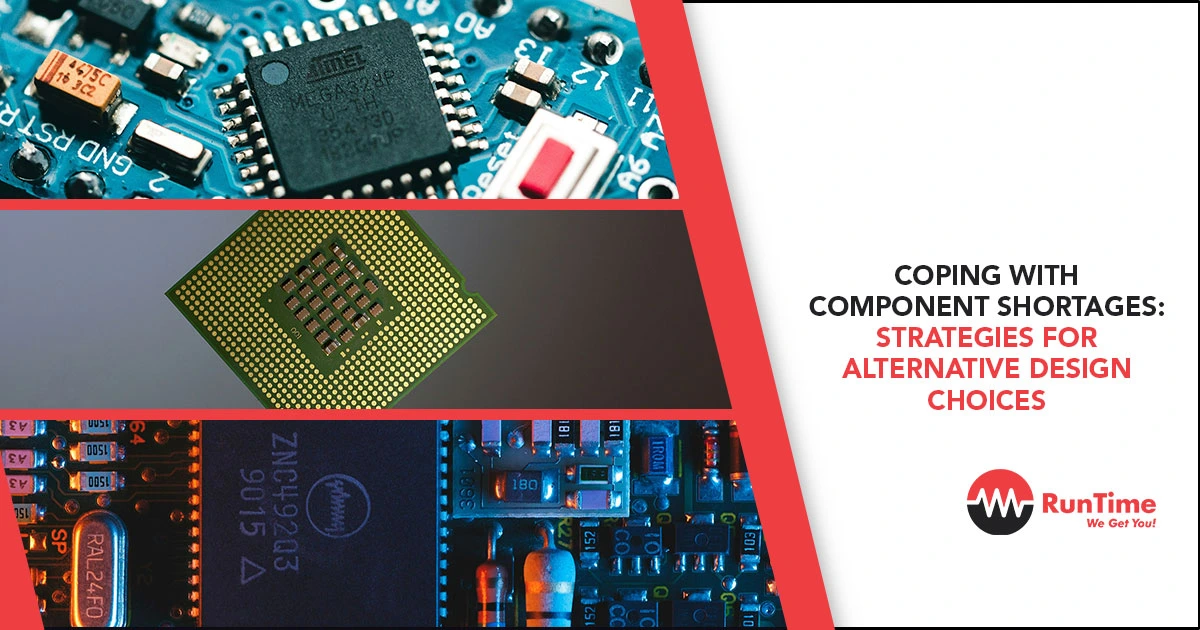Introduction
The global electronics industry has been grappling with an unprecedented component shortage crisis, driven by a combination of factors such as supply chain disruptions, increased demand for electronics, and geopolitical tensions. For embedded engineers, this has created a challenging environment where traditional design practices are no longer sufficient. The ability to adapt and find alternative design choices has become a critical skill.
This article delves into the strategies that embedded engineers can employ to cope with component shortages. We will explore various approaches, including redesigning for alternative components, leveraging modular designs, and adopting new technologies. By the end of this article, you will have a comprehensive understanding of how to navigate the current component shortage landscape and ensure the continuity of your projects.
Understanding the Component Shortage Crisis
The Root Causes
The component shortage crisis is the result of several interrelated factors:
- Supply Chain Disruptions: The COVID-19 pandemic caused significant disruptions in global supply chains, leading to factory shutdowns, transportation delays, and labor shortages. These disruptions have had a cascading effect on the availability of electronic components.
- Increased Demand for Electronics: The pandemic also led to a surge in demand for electronics, as remote work, online education, and home entertainment became the norm. This increased demand has put additional pressure on an already strained supply chain.
- Geopolitical Tensions: Trade tensions between major economies, such as the United States and China, have further exacerbated the component shortage. Export restrictions, tariffs, and sanctions have disrupted the flow of critical components.
- Natural Disasters: Natural disasters, such as earthquakes and floods, have also impacted the production of electronic components. For example, the 2021 earthquake in Taiwan, a major hub for semiconductor manufacturing, caused significant disruptions in the supply of chips.
The Impact on Embedded Systems Design
The component shortage has had a profound impact on embedded systems design. Engineers are facing longer lead times, higher costs, and limited availability of critical components. This has forced many to rethink their design strategies and explore alternative approaches.
Strategies for Coping with Component Shortages
1. Redesigning for Alternative Components
One of the most straightforward strategies for coping with component shortages is to redesign your system to use alternative components. This approach involves identifying suitable substitutes for unavailable parts and making the necessary design adjustments.
a. Identifying Alternative Components
The first step in redesigning for alternative components is to identify suitable substitutes. This requires a thorough understanding of the specifications and requirements of the original component. Key factors to consider include:
- Electrical Characteristics: Ensure that the alternative component has similar electrical characteristics, such as voltage, current, and power ratings.
- Package and Footprint: The alternative component should have a compatible package and footprint to minimize the need for PCB redesign.
- Performance: Evaluate the performance of the alternative component to ensure it meets the requirements of your application.
b. Evaluating Compatibility
Once you have identified potential alternative components, the next step is to evaluate their compatibility with your existing design. This involves:
- Simulation and Testing: Use simulation tools to model the behavior of the alternative component in your circuit. Conduct thorough testing to validate its performance.
- Firmware and Software Adjustments: In some cases, switching to an alternative component may require adjustments to your firmware or software. Ensure that these changes are well-documented and tested.
c. Managing the Transition
Transitioning to alternative components can be a complex process. It is essential to manage this transition carefully to minimize disruptions to your project. Key considerations include:
- Inventory Management: Ensure that you have sufficient inventory of the alternative component to support your production needs.
- Supplier Relationships: Build strong relationships with suppliers to secure a stable supply of the alternative component.
- Documentation: Update your design documentation to reflect the use of the alternative component. This includes schematics, bill of materials (BOM), and assembly drawings.
2. Leveraging Modular Designs
Modular design is a powerful strategy for coping with component shortages. By breaking down your system into modular components, you can increase flexibility and reduce the impact of component shortages.
a. Benefits of Modular Design
Modular design offers several benefits in the context of component shortages:
- Flexibility: Modular designs allow you to swap out individual modules without affecting the entire system. This makes it easier to adapt to component shortages.
- Scalability: Modular designs are inherently scalable, allowing you to add or remove modules as needed. This can be particularly useful in applications with varying requirements.
- Ease of Maintenance: Modular designs simplify maintenance and repair, as individual modules can be replaced without affecting the rest of the system.
b. Implementing Modular Design
Implementing a modular design requires careful planning and consideration. Key steps include:
- Defining Modules: Identify the functional blocks in your system and define them as separate modules. Each module should have a well-defined interface and functionality.
- Standardizing Interfaces: Standardize the interfaces between modules to ensure compatibility and ease of integration. This includes electrical, mechanical, and software interfaces.
- Designing for Interchangeability: Design modules to be interchangeable, allowing for easy replacement with alternative components or modules.
c. Case Study: Modular Design in Industrial Automation
Consider an industrial automation system that uses a modular design approach. The system is divided into several modules, including a power supply module, a control module, and various sensor and actuator modules.
When a component shortage affects the power supply module, the system can be quickly adapted by replacing the affected module with an alternative design. This minimizes downtime and ensures the continuity of the automation process.
3. Adopting New Technologies
In some cases, the best way to cope with component shortages is to adopt new technologies that are less affected by the current crisis. This can involve transitioning to newer components, leveraging emerging technologies, or exploring alternative manufacturing processes.
a. Transitioning to Newer Components
Newer components, such as those based on advanced semiconductor technologies, may be less affected by shortages due to their higher production volumes and more robust supply chains. Transitioning to these components can help mitigate the impact of shortages.
- Research and Development: Invest in research and development to identify and evaluate newer components that can meet your design requirements.
- Collaboration with Suppliers: Work closely with suppliers to gain early access to newer components and secure a stable supply.
b. Leveraging Emerging Technologies
Emerging technologies, such as System-on-Chip (SoC) and Field-Programmable Gate Arrays (FPGAs), offer new opportunities for embedded systems design. These technologies can provide greater flexibility and reduce the reliance on discrete components.
- SoC Solutions: SoCs integrate multiple functions into a single chip, reducing the need for external components. This can help mitigate the impact of component shortages.
- FPGA-Based Designs: FPGAs offer the flexibility to implement custom logic and adapt to changing requirements. This can be particularly useful in applications where component availability is uncertain.
c. Exploring Alternative Manufacturing Processes
Alternative manufacturing processes, such as additive manufacturing (3D printing) and flexible electronics, can also help address component shortages. These processes offer new possibilities for creating custom components and reducing reliance on traditional supply chains.
- Additive Manufacturing: 3D printing can be used to create custom mechanical components, reducing the need for off-the-shelf parts.
- Flexible Electronics: Flexible electronics offer new possibilities for creating custom circuits and interconnects, reducing the reliance on traditional PCB manufacturing.
4. Strengthening Supply Chain Resilience
In addition to design strategies, embedded engineers can also take steps to strengthen the resilience of their supply chains. This can help mitigate the impact of future shortages and ensure a more stable supply of components.
a. Diversifying Suppliers
Relying on a single supplier for critical components can be risky. Diversifying your supplier base can help reduce the impact of shortages and ensure a more stable supply.
- Multiple Sources: Identify multiple sources for critical components and establish relationships with each supplier.
- Geographical Diversity: Consider sourcing components from different geographical regions to reduce the impact of regional disruptions.
b. Building Inventory Buffers
Maintaining a buffer inventory of critical components can help mitigate the impact of shortages. This involves keeping a stock of key components to ensure continuity of production.
- Strategic Stockpiling: Identify critical components and maintain a strategic stockpile to cover potential shortages.
- Inventory Management: Implement robust inventory management practices to track and manage your buffer inventory effectively.
c. Collaborating with Suppliers
Building strong relationships with suppliers can help you navigate the component shortage crisis more effectively. Collaboration with suppliers can provide early warning of potential shortages and access to alternative solutions.
- Supplier Partnerships: Establish partnerships with key suppliers to gain insights into their production capabilities and supply chain status.
- Joint Planning: Work with suppliers on joint planning and forecasting to align your production needs with their supply capabilities.
Case Study: Coping with Component Shortages in Automotive Electronics
To illustrate the practical application of these strategies, let’s consider a case study of an automotive electronics manufacturer facing component shortages.
Application Overview
The manufacturer produces electronic control units (ECUs) for various automotive applications, including engine control, infotainment, and advanced driver-assistance systems (ADAS). The ECUs rely on a range of components, including microcontrollers, power management ICs, and sensors.
Challenges
The manufacturer is facing significant challenges due to component shortages:
- Microcontroller Shortages: The global shortage of microcontrollers has led to extended lead times and increased costs.
- Power Management ICs: The availability of power management ICs is also limited, impacting the production of ECUs.
- Sensor Availability: The supply of sensors used in ADAS systems is constrained, affecting the production of these critical systems.
Strategies Employed
To cope with these challenges, the manufacturer implemented the following strategies:
- Redesigning for Alternative Components: The manufacturer identified alternative microcontrollers and power management ICs that met the required specifications. They conducted thorough testing to validate the performance of these components and updated their design documentation accordingly.
- Leveraging Modular Designs: The manufacturer adopted a modular design approach for their ECUs, allowing them to swap out individual modules as needed. This increased flexibility and reduced the impact of component shortages.
- Adopting New Technologies: The manufacturer transitioned to newer microcontroller families that were less affected by shortages. They also explored the use of SoC solutions to reduce the reliance on discrete components.
- Strengthening Supply Chain Resilience: The manufacturer diversified their supplier base, building relationships with multiple suppliers for critical components. They also maintained a buffer inventory of key components to ensure continuity of production.
Results
By implementing these strategies, the manufacturer was able to mitigate the impact of component shortages and ensure the continuity of their production. They were able to maintain their production schedules, reduce costs, and improve the resilience of their supply chain.
Conclusion
The component shortage crisis has created significant challenges for embedded engineers, but it has also provided an opportunity to rethink traditional design practices and explore new approaches. By redesigning for alternative components, leveraging modular designs, adopting new technologies, and strengthening supply chain resilience, embedded engineers can navigate the current landscape and ensure the success of their projects.
As the electronics industry continues to evolve, the ability to adapt and find alternative design choices will remain a critical skill. By staying informed and proactive, embedded engineers can not only cope with the current component shortages but also build more resilient and flexible systems for the future.









